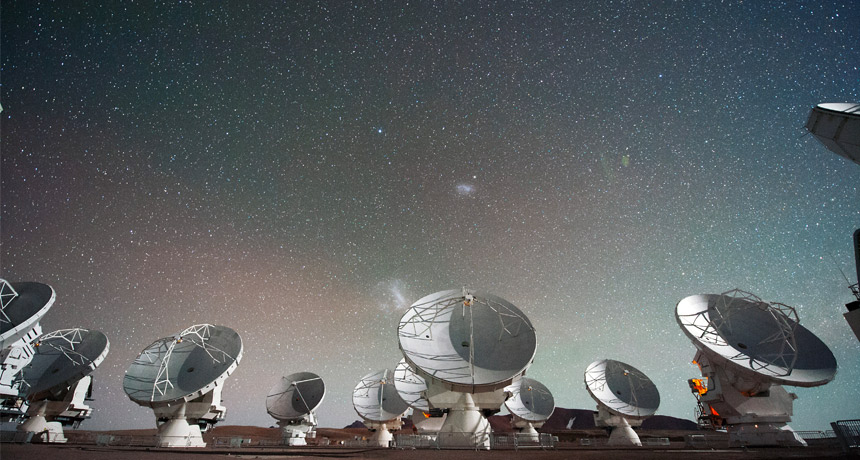A galaxy 11.3 billion light-years away appears filled with dark matter
The finding bucks earlier research suggesting faraway galaxies lack the invisible stuff

LONG AGO AND FAR AWAY Using the telescopes of the Atacama Large Millimeter/submillimeter Array in Chile (shown), astronomers discovered the most distant yet galaxy that appears to be filled with dark matter.
C. Malin/ESO
A distant galaxy appears filled with dark matter.